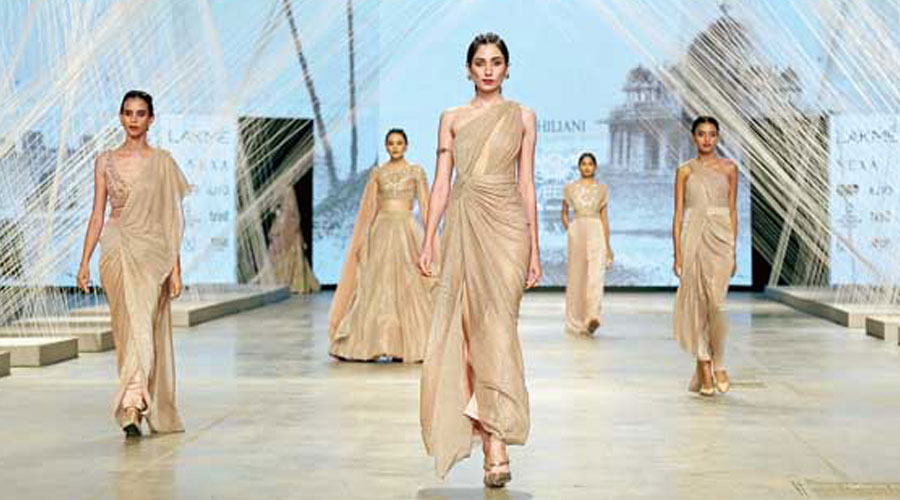To call Tarun Tahiliani just a veteran of the Indian fashion industry is an understatement of colossal proportion. In the last year itself, he has shown how despite the 30 years gone by, he still continues to embrace continuity, ingenuity and the future in his designs with how he embraced the digital space as a platform to showcase the “timelessness” of his designs. Therefore, it was only apt that the “OG” designer was the opening act of the FDCI X Lakme Fashion Week, where he showcased his autumn/winter 2021 collection as a sum total of 10 capsules.
Held at the Jio World Convention Centre in Mumbai on October 7, Tarun’s show marked the return for most to the world of physical fashion shows and therefore it made complete sense that the collection was called The Reunion. Previewed through a fun video dropped on October 5, The Reunion, in Tarun’s words, represents “a gathering of known faces after a year of separation due to the pandemic”.
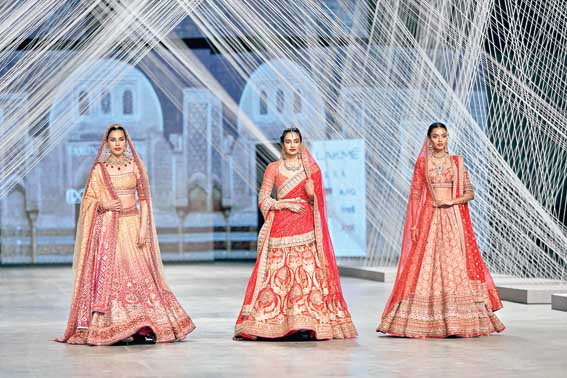
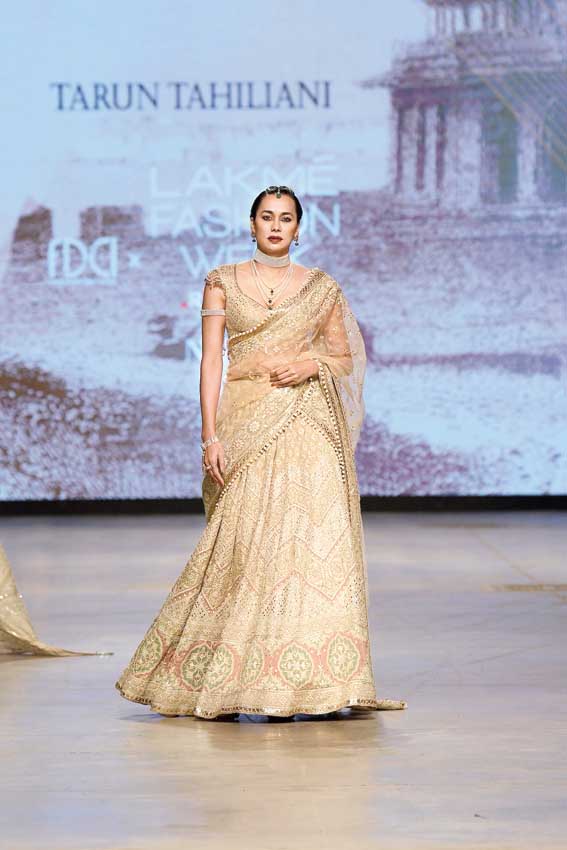
The Delhi-based designer always made a strong case for wearable, light couture and his autumn/winter line goes further down the same road with organza, silk, brocade, tulle, raw silk, crushed Chanderi, presented in the way of the following capsules — Molten Haveli, Temple Mauli, Pichwai, Chikankari, Pakeezagi, Divine Drapes, Shesh Mahal, Rangrez, Brocade and Bridal. Though the designer has always presented Indian crafts in his “India Modern” style, perhaps the urgency of making things more wearable and the importance of making our crafts more accessible further comes from our collective reckonings induced by the hiatus of the pandemic. “Work needs to continue as there are so many hands involved in what we do. Consumption, also, has to be more mindful than before because we have to think about the future of the planet,” said Tarun. The designer was delighted to showcase at the two-edition-old FDCI X Lakme Fashion Week. “This is something that I have long hoped for and I am glad that it has finally happened,” he said.

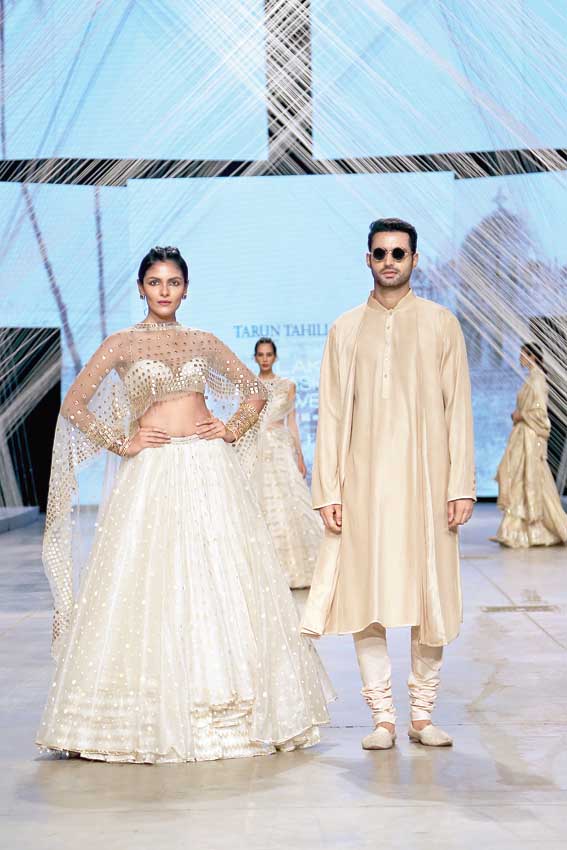
Deep tones of reds, greens and golds in Molten Haveli took a deep-dive into jaali patterns to showcase the intricacy of each manipulation by means of cascading lehngas. Thousands of meters of woven brocade strips were cut out and applied on different forms for Rangrez and its royal colours. Temple Mauli was inspired by the Badrinath temple and the Rabari craft that found expression on a vivid colour palette created on textiles like organza, silk and brocade. The Pichwai collection saw the fusing of Raasleela scenes from traditional Indian paintings and Tarun’s traditional motifs from peacocks to cows and lotuses. The Chikankari collection was inspired by the tomb of I’timad-ud-Daulah in Agra and its delicate lattice carvings. The bridal capsule saw more of Tarun’s signature designs. Talking about the silhouettes, Tarun highlighted the importance of toning down the silhouettes. “Apart from the bridal designs, the silhouettes are ones that can be worn as occasion wear or evening wear. Even brides can wear many of these for some of their bridal events,” he said.

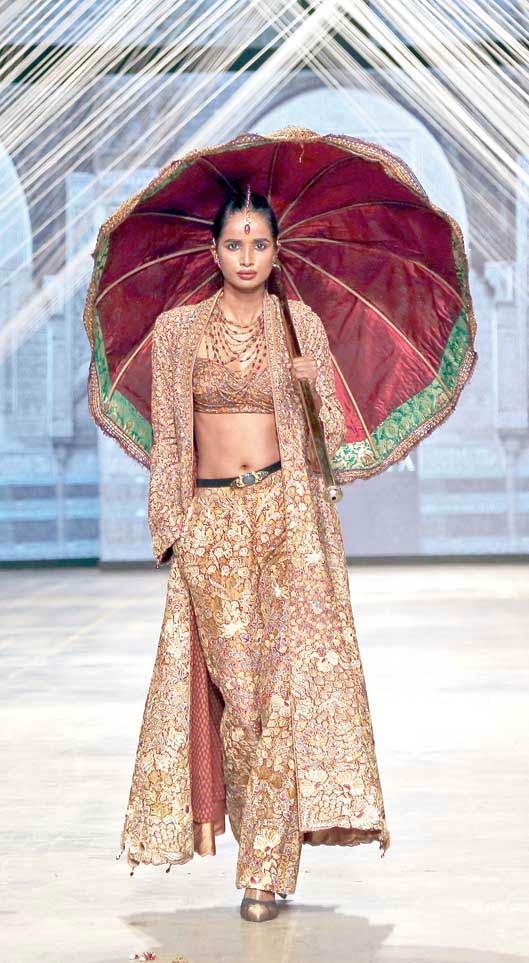
Lehngas, jumpsuits, tailored pants, long jackets and shrugs caught our eyes apart from the usual concept drapes that are quintessentially TT. In fact, The Reunion had everything that one can imagine at a glamorous soiree held with close friends after a long separation to feed our longing for some dazzle and “zsa zsa zsu”.

